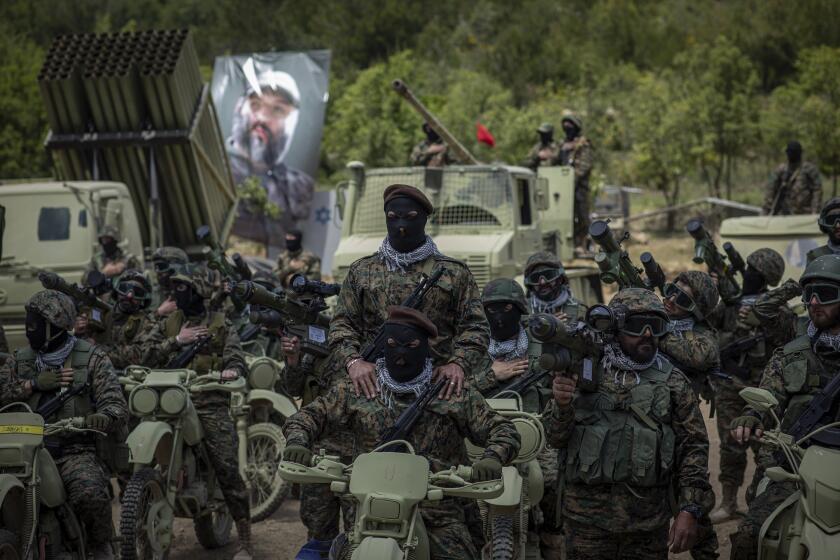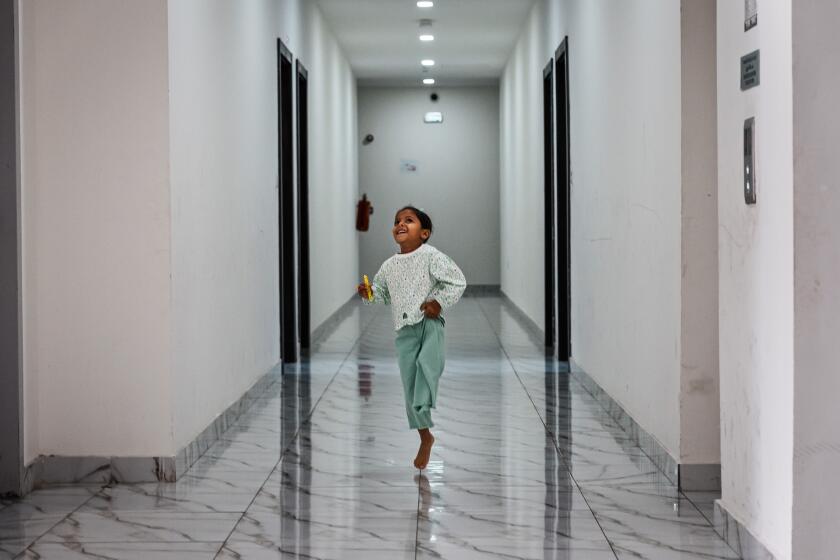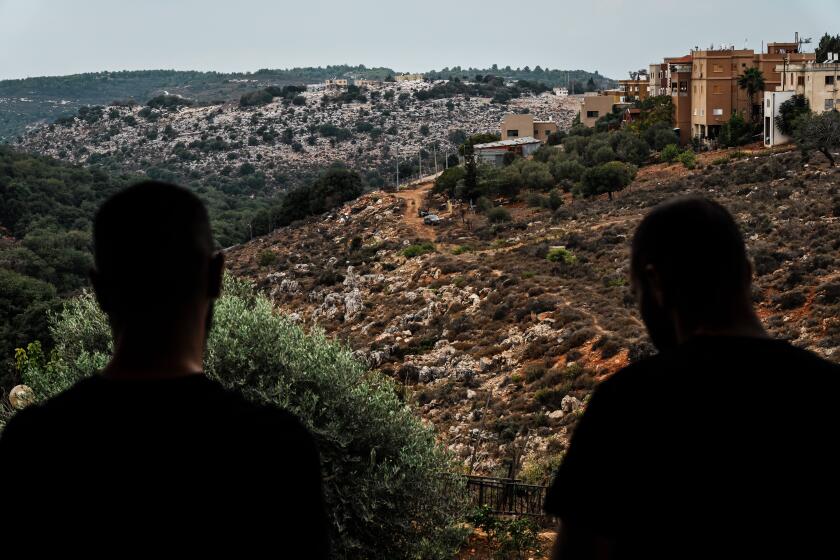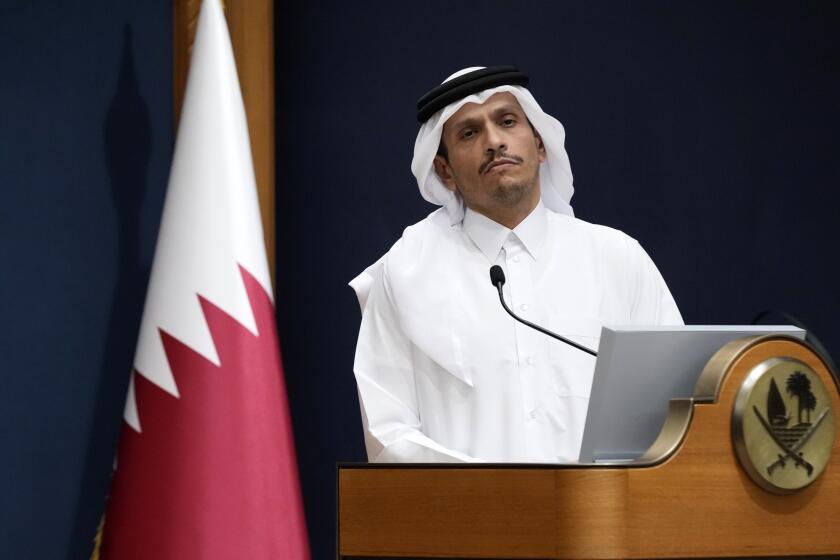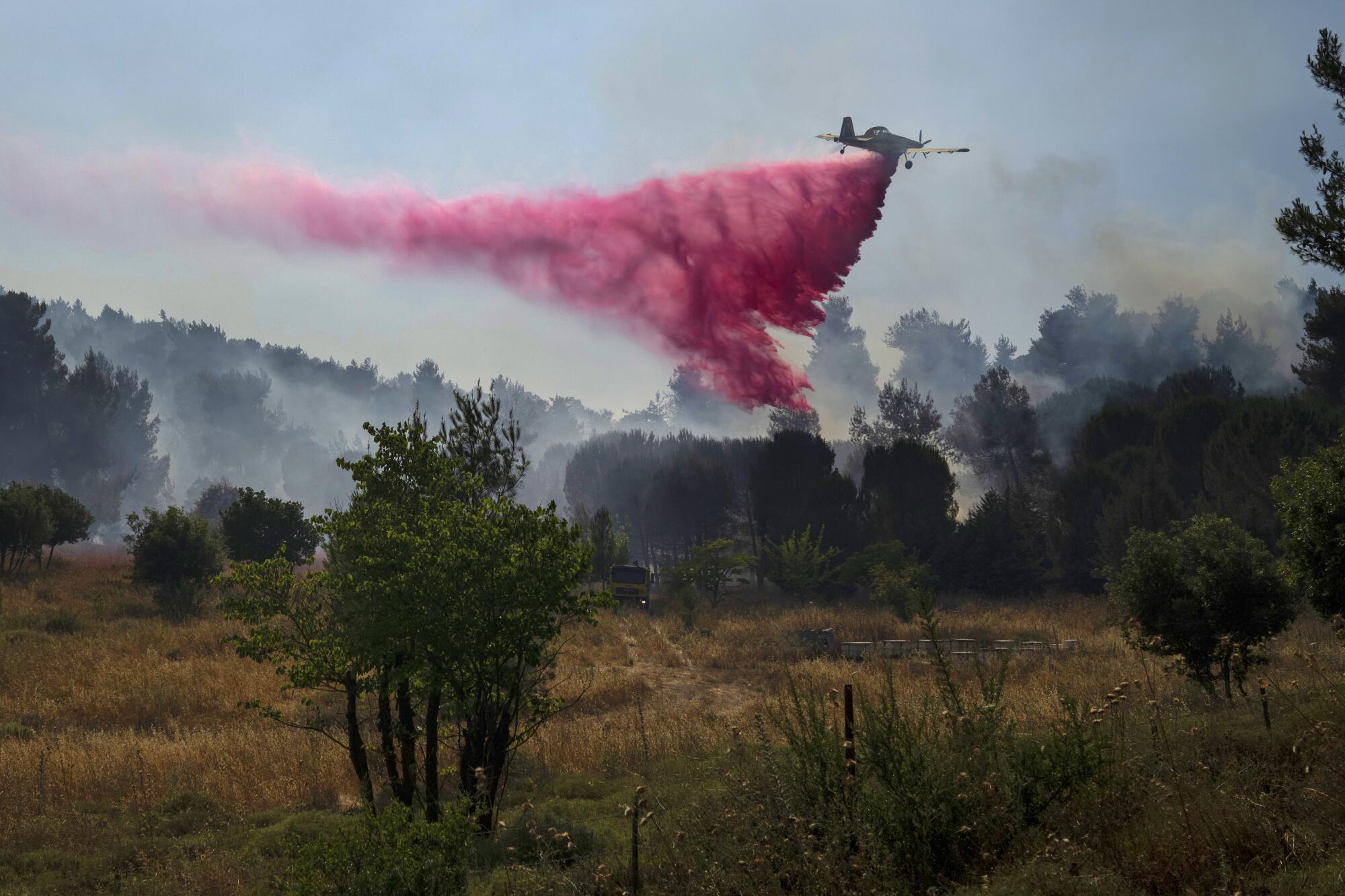
AITAROUN, Lebanon — It was only 10 a.m., but it had already been a long day for the firefighters in these borderlands of southern Lebanon.
They had barely finished containing a 130-acre forest fire when a call came in at 2 a.m. about a house in flames. Both blazes were caused by bombs from Israeli warplanes.
Now there were three teams, all scrambling one recent Thursday morning to deal with fires from Israeli strikes across the 15 villages and towns under their mandate.
“At this rate, we’ll have to get the reserve teams,” said Ali Qashaqish, 36, who heads field operations for one of the main fire stations in the southern district of Bint Jbeil.
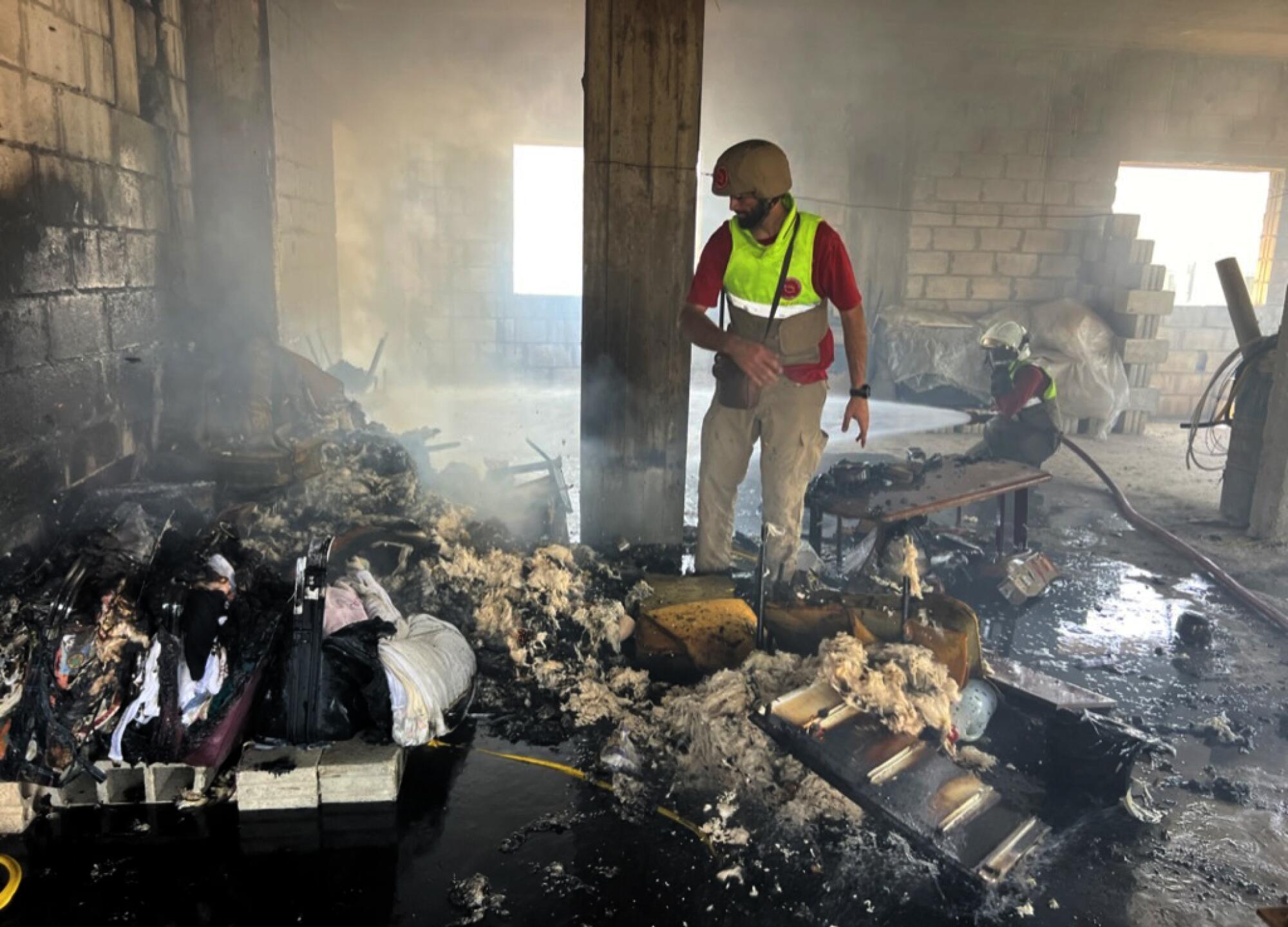
Summer always means fire in Lebanon’s bucolic south — and regular work for fire crews here among the fields and orchards of olives, almonds, pines, cherries, cherimoyas and avocados.
But the fire season this year has been fueled not only by scorching temperatures but also by fighting between the Lebanese militant group Hezbollah and Israel. The combination has laid waste to thousands of acres of farmland on both sides of the border, displaced about 160,000 people and wrought heavy economic damage.
Hezbollah fired the first shots Oct. 8 — the day after the Hamas attack on southern Israel — in what it has described as a support campaign for Gaza. Since then, Hezbollah and Israel have traded strikes daily along the 62-mile-long border. The death toll in Lebanon has climbed to at least 473, mostly fighters but also 92 civilians, according to tallies to the group’s statements and various monitoring groups. Israel says 17 of its soldiers have been killed, along with 10 civilians.
Lebanon-based Hezbollah is holding back from all-out war with Israel for now — but chances of a dangerous miscalculation by either side are high.
Armed by Iran, Hezbollah has escalated its campaign in recent weeks, attacking Israel an average of 10 times a day, according to observers. Last week it fired 200 rockets on the Galilee area after an Israeli drone strike took out one of its top-flight commanders.
Israel has launched roughly four times as many attacks as Hezbollah over the course of the conflict, according to the Armed Conflict Location and Event Data Project, a Wisconsin-based research group specializing in conflict data analysis. Last week, Israel made its deepest attack yet into Lebanon, striking 75 miles north of the border.
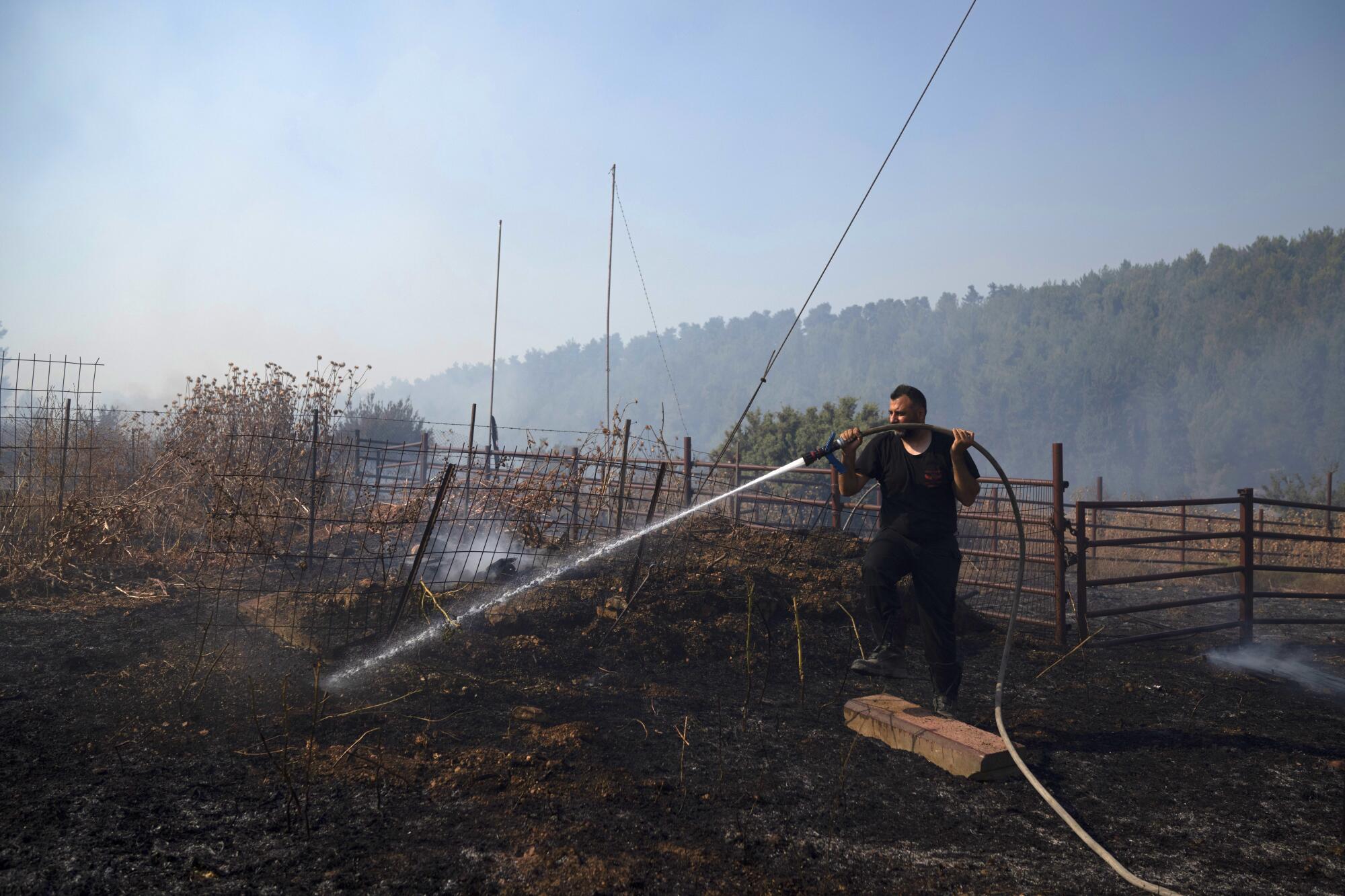
In Israel, about 7,400 acres have burned this year because of Hezbollah rockets, the government reported last week, while at least 60,000 Israelis remain displaced from the fighting with Hezbollah. Israeli news channels earlier this month showed smoke wreathing wide swaths of the Galilee and Golan Heights, prompting threats from Israeli leaders to obliterate Lebanon and turn the capital, Beirut, into another Gaza.
Israel-Hamas war: In Qatar’s capital, a compound housing Palestinian medical evacuees from Gaza is a living catalog of what war does to the human body.
“All Hezbollah strongholds should be burned,” Israel’s national security minister, Itamar Ben-Gvir, said in a video from the northern town of Kiryat Shmona after a Hezbollah barrage ignited fires in the area this month. “They should be destroyed. War!”
In Lebanon, the scale of the fire damage is harder to determine. The country’s National Council for Scientific Research reported in early May that 1,680 hectares have burned since Oct. 7, though some officials have put the damage as high as 6,000 hectares.
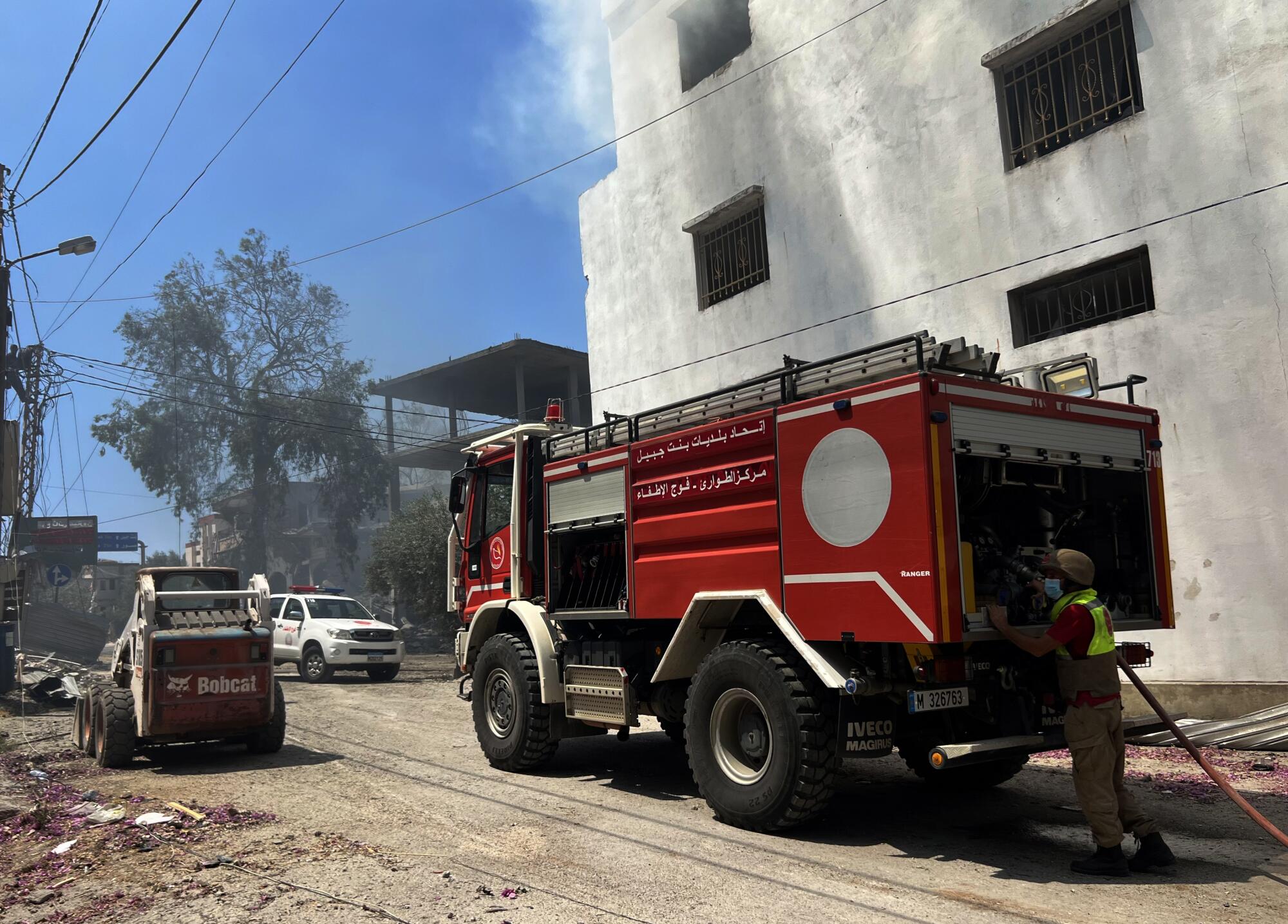
Many areas along the border have been deemed too dangerous for Lebanese authorities to visit to update their figures.
The war has displaced some 100,000 people in the south and forced farmers to leave their land untended, with leaves layered eight inches deep and crops crowded by neck-high thistles — all ready fuel for any conflagration.
“There’s just so much more flammable material than in the past,” said Jaafar Kawtharani, the civil defense station chief, which is part of the Hezbollah-affiliated Islamic Health Committee. “Any spark can start a big fire.”
An intense heat wave these past few weeks has made for a particularly combustible fire season, as temperatures brushed past 100 degrees and strong, dry winds supercharged spreading flames.
On Israel’s border with Lebanon, residents are worried that groups like Hezbollah will join a war that eventually spirals into a regionwide conflict.
The fires have been exacerbated by the Israeli military’s widespread use of incendiary munitions, including fireballs lobbed by catapults and slingshots in a bid to deny Hezbollah fighters forest cover.
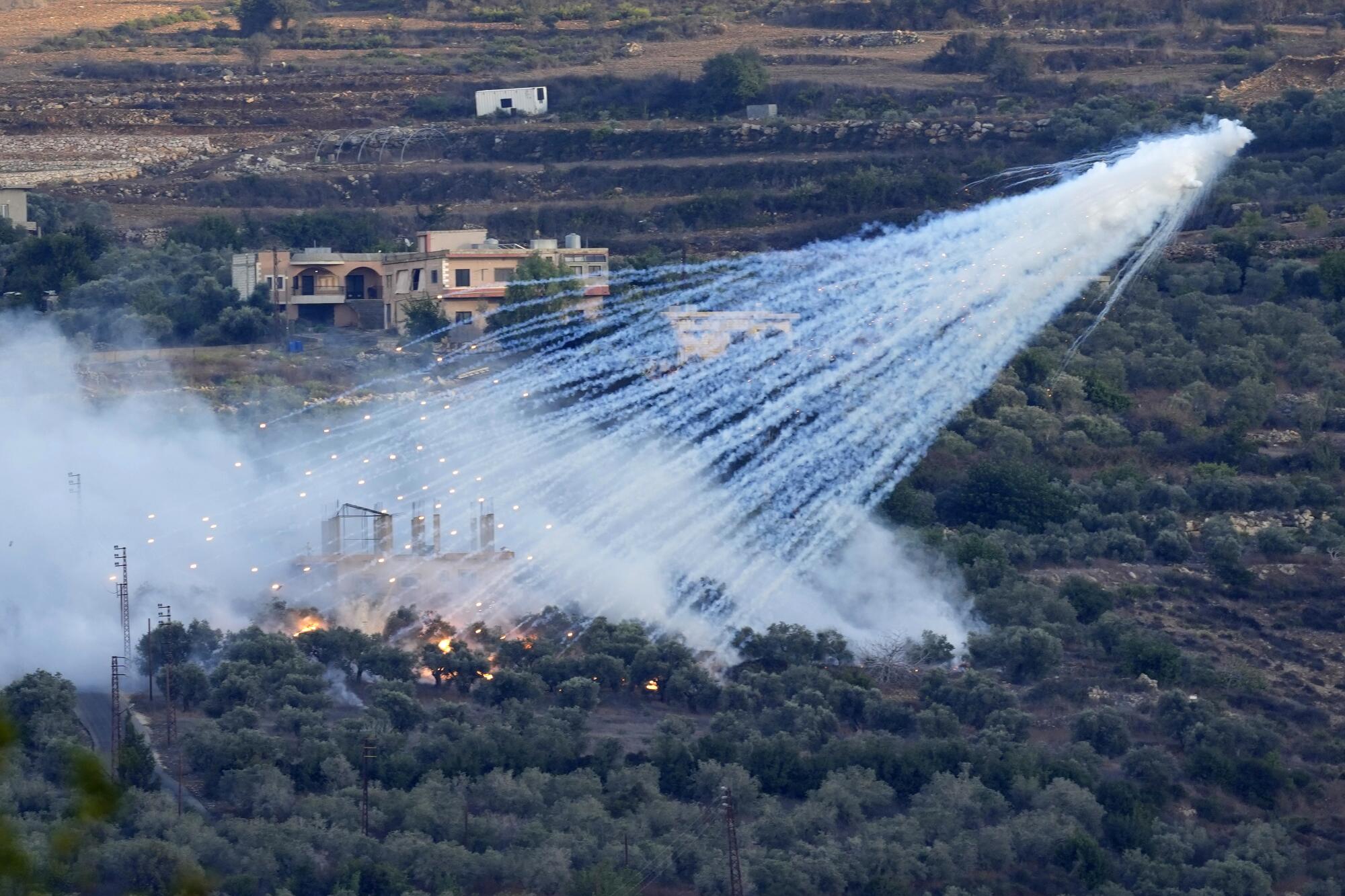
Israeli troops have also deployed white phosphorus, a substance that burns at high temperature and can be used to create smokescreens to obscure troop movements, but can cause respiratory damage and deadly burns. Its use near civilian areas is generally a violation of international humanitarian law.
Disagreements over the endgame could doom the Israel-Hamas cease-fire deal if the warring sides aren’t willing to negotiate.
Human Rights Watch reported this month that Israeli forces used white phosphorus munitions in at least 17 municipalities across south Lebanon since October, including over populated areas. Lebanese authorities have counted more than 159 white phosphorus attacks and at least 183 incendiary strikes since October.
“In our sector, before June, we would see phosphorus or an incendiary shell burn once a week or so,” said Samer Hardan, head of the government’s firefighter station in the southeastern village of Rachaya Al-Foukhar. “Now? It’s every day, in multiple areas.”
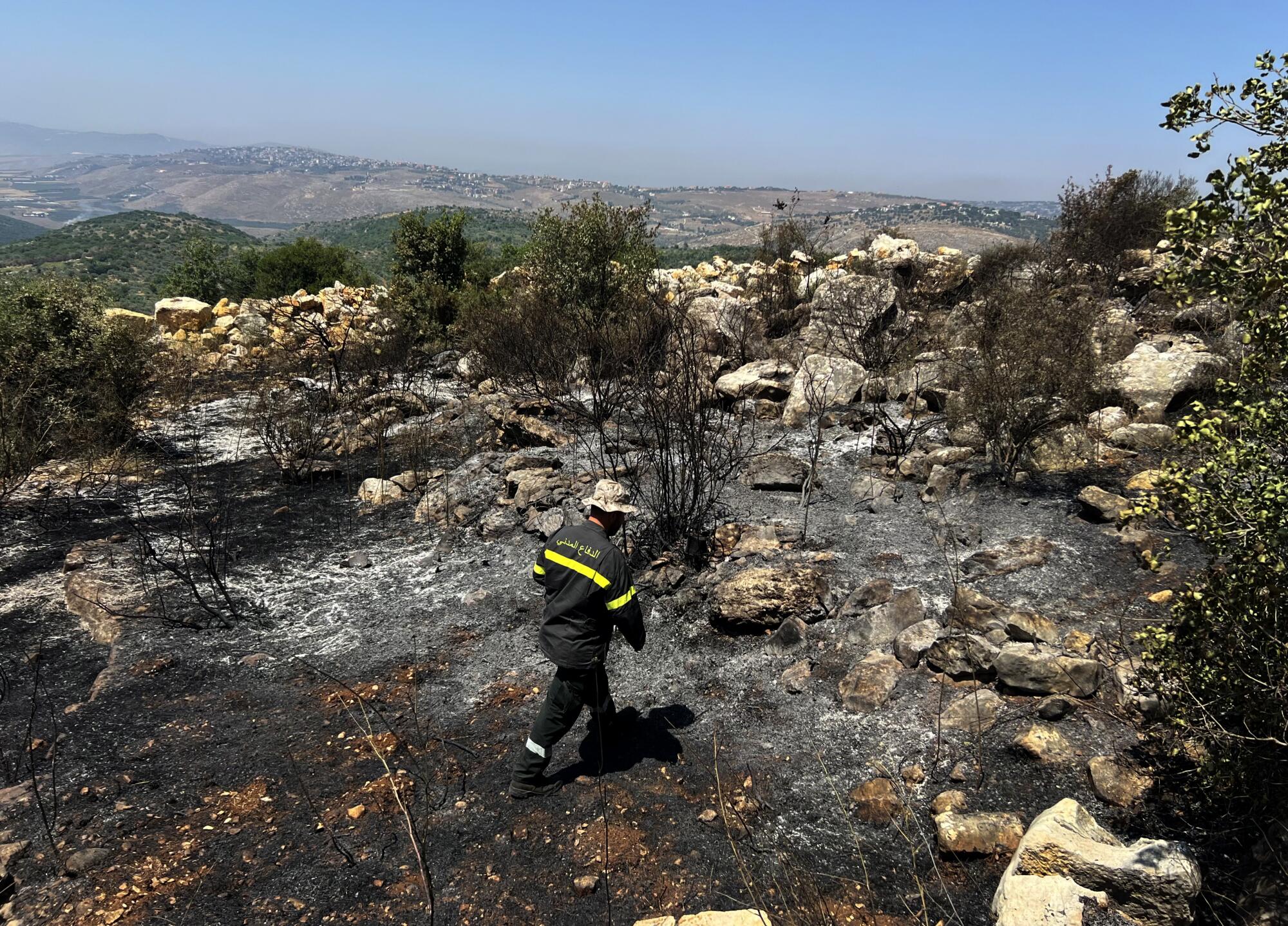
The Israeli army has said its use of white phosphorus complies with international law and that it does not use such shells for starting fires.
Normal ordnance was bad enough. As the firefighters chased calls, a trio of missiles slammed into the central thoroughfare of Aitaroun, a village less than two miles from the border and a staging ground for Hezbollah. The June 6 attack sent burning shrapnel flying 150 feet, sparking fires in an apartment building and three orchards.
Qashaqish, the field operations chief, trudged through the backyard of a collapsed house into an orchard where a colleague sprayed water on flames lingering on the trunk of an olive tree. He looked at his watch then at the sky, scanning for any sign of a drone.
The fire crews had arrived about an hour and a half earlier. Though the fire wasn’t completely out, they would have to leave soon or risk being caught in an Israeli attack.
“If I had time, I wouldn’t leave a single blade of grass burning,” he said. “But this is all I can do now.
“Smell that? That’s the oil in the olives burning.”
Back in the pickup, he began rattling off the names of orchards ravaged by the hostilities, a note of sadness in his voice: “On this mountain, we’ve already lost 12 acres of oak. Nearby, more than 200 acres of seasonal fruit trees, not to mention olives.”
A burst of static from his walkie-talkie interrupted him as a dispatcher came on to report yet another attack on a village seven miles away.
“Shell, incendiary or white phosphorus?” Qashaqish asked. He gunned the engine and drove off before the answer came.
With well over two-thirds of people in southern Lebanon relying on agriculture and livestock farming, the losses of the last eight months have been devastating, said Mohammad Husseini, the head of the Farmers’ Union for the region.
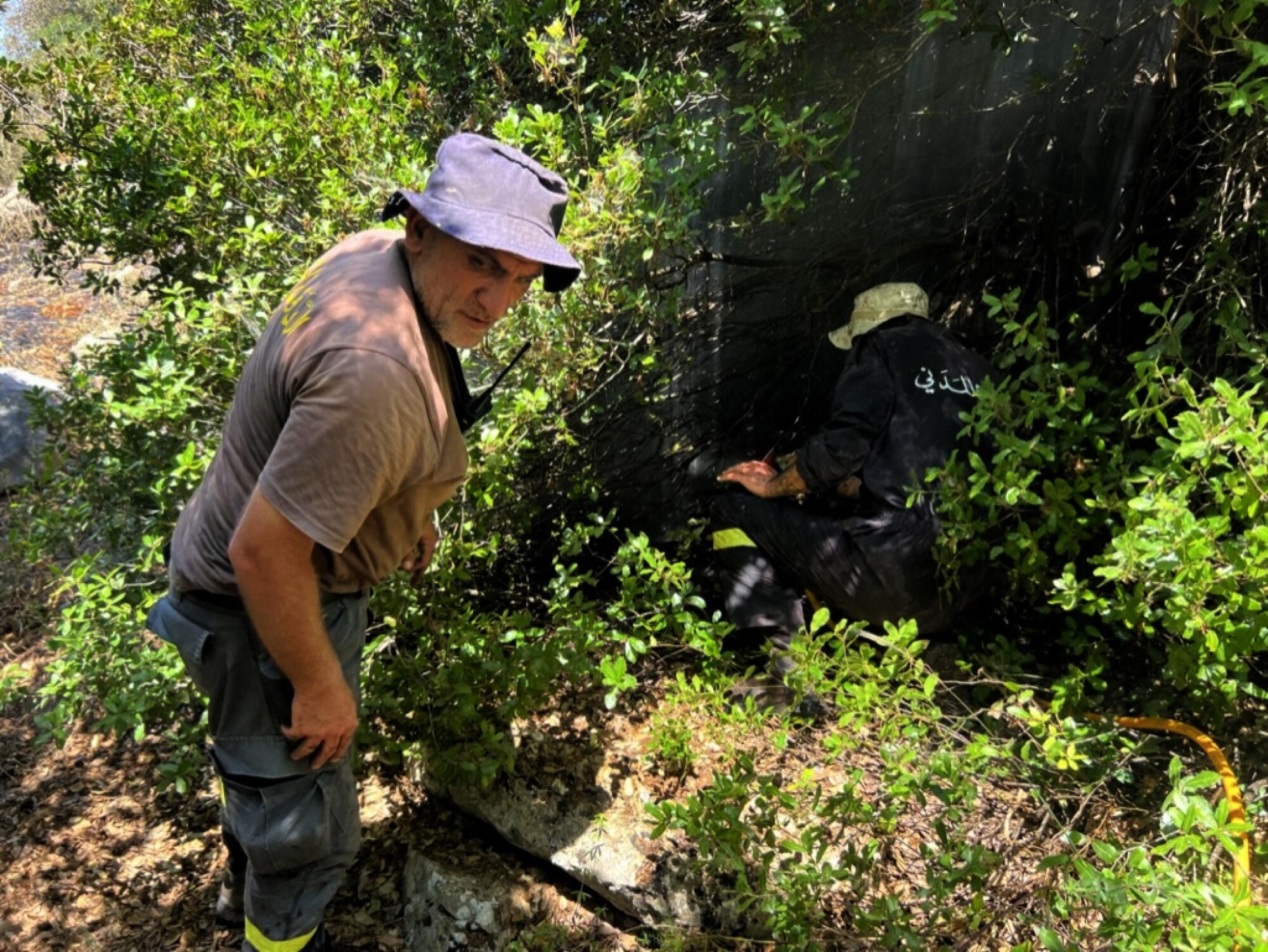
“A lot of farmers aren’t daring to go to their lands,” he said. “They can’t harvest their crops, but they also can’t prepare the land to plant again. They’ve effectively lost two seasons.”
Livestock farmers, unable to take care of their animals, were forced to sell most of them for slaughter at cut prices, he added.
Those losses are having knock-on effects across the economy, said Mohammad Chamseddine, a policy specialist at the Beirut-based research firm Information International. He estimated the country was losing as much as $7 million a day. And with little prospect of the war ending soon, tourism is also hurting, he said.
Khaldoun Fanash, a farmer from Dheira, a border town of some 2,000 people that has become a regular target for Israeli forces, fled to the coastal city of Tyre after his house was hit with white phosphorus Oct. 16. It has subsequently been struck three times by artillery, and he’s lost tens of thousands of dollars’ worth of avocado and cherimoya crops, not to mention 50 beehives.
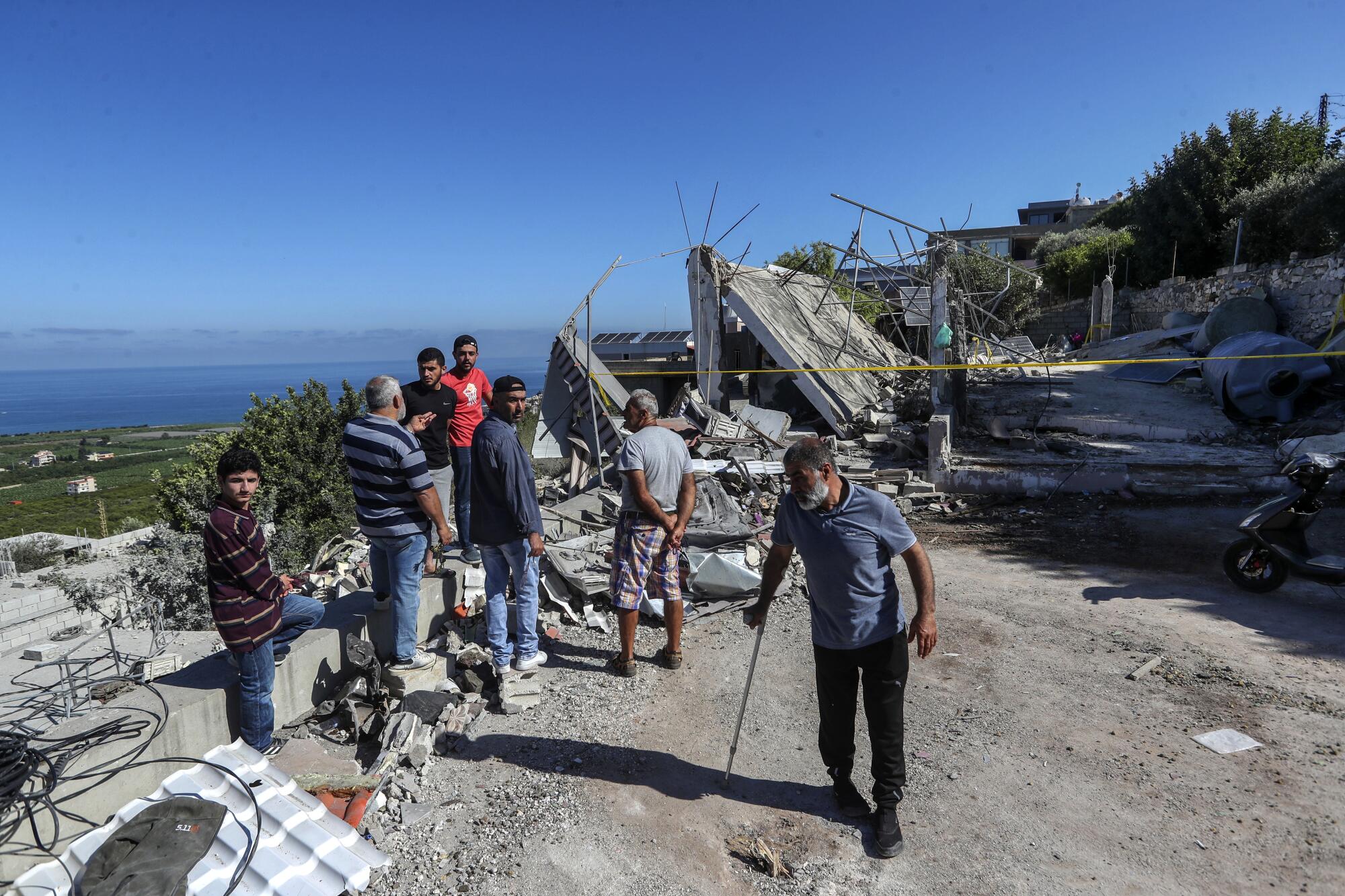
Hezbollah, he said, is giving the displaced a monthly $200 subsidy for expenses along with $333 for rent. But rental prices in Tyre are now more than twice that.
“A person used to working on the farm, making $1,000 a month, can’t accept working in the city for $100,” Fanash said.
Though Fanash remains supportive of Hezbollah, he acknowledged the toll of its extended solidarity campaign with Gaza.
“This war has been going on for eight months,” he said. “It’s not one or two weeks. And people say it’s only going to get bigger.
“In Beirut, people have no problems. You can even see people partying here on the beaches in Tyre. Those of us living on the border, we’re the ones paying the price for this war.”
That applies to the Israeli side as well. The north of the country supplies 40% of the country’s fruit, but agricultural organizations say some 500 growers have left since the start of the war. Tourism there is all but dead. The region is also a tech hub, and those industries have suffered too.
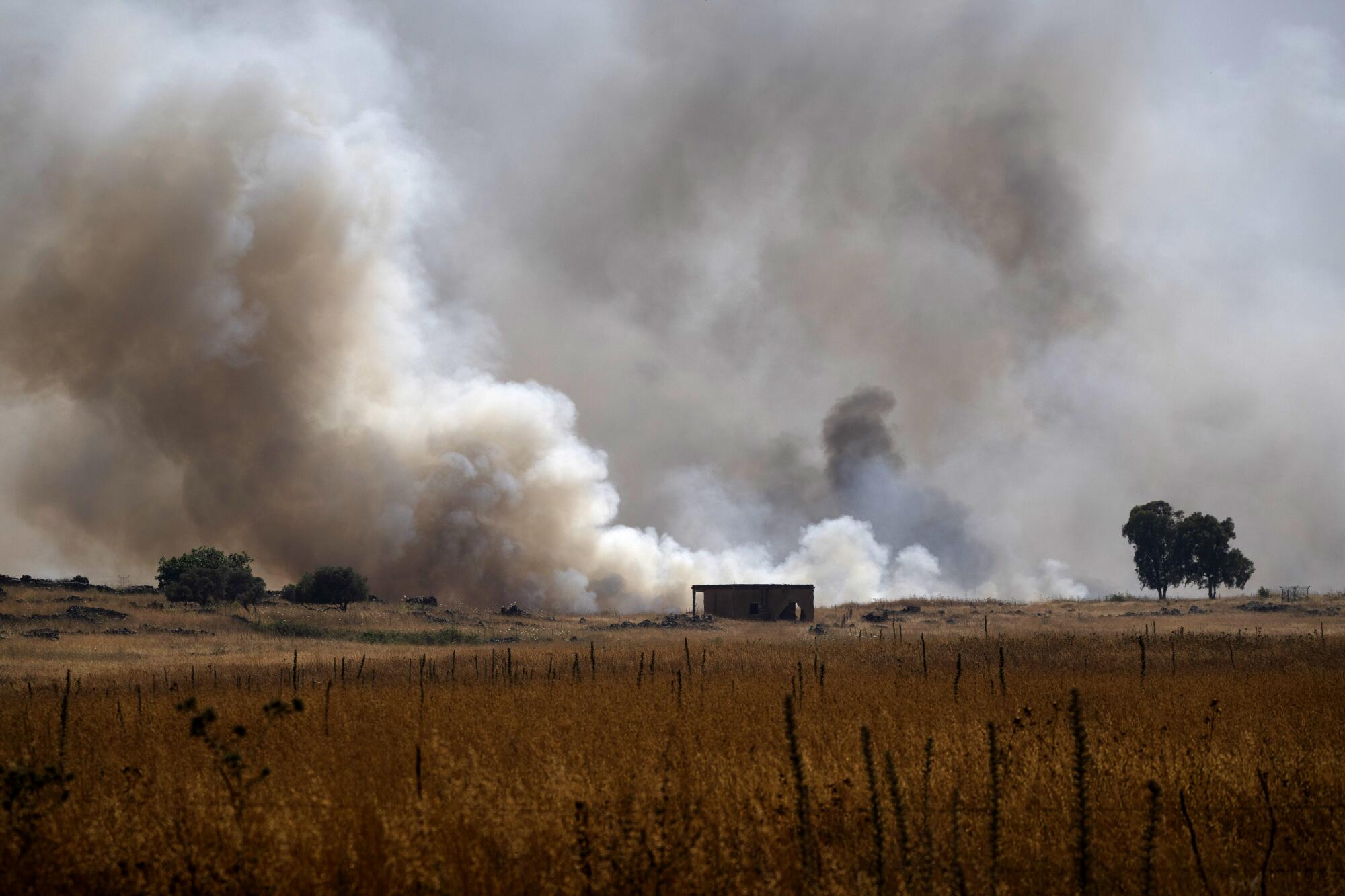
Many Israelis here fear a Hezbollah version of Hamas’ Oct. 7 attack.
“It’s not a question of if it will happen but when it will happen,” Avichai Stern, the mayor of Kiryat Shmona, the largest town in Israel’s north, said in an interview last month with a philanthropy website.
He said only 3,000 of the town’s 24,000 residents remain and that many who fled have said they will not return unless the threat from Hezbollah is eliminated.
“We have to wipe them out,” he said.
This week, the Jewish People Policy Institute released a poll of 800 Israelis that found roughly two-thirds wanted Hezbollah attacked “with full force,” and more than a third wanted it done as quickly as possible.
Hezbollah insists it is not seeking a wider war with Israel. But in a televised address Wednesday, the group’s chief, Sayyed Hassan Nasrallah, threatened that no place in Israel would be safe from the group’s arsenal if Israel escalated the war.
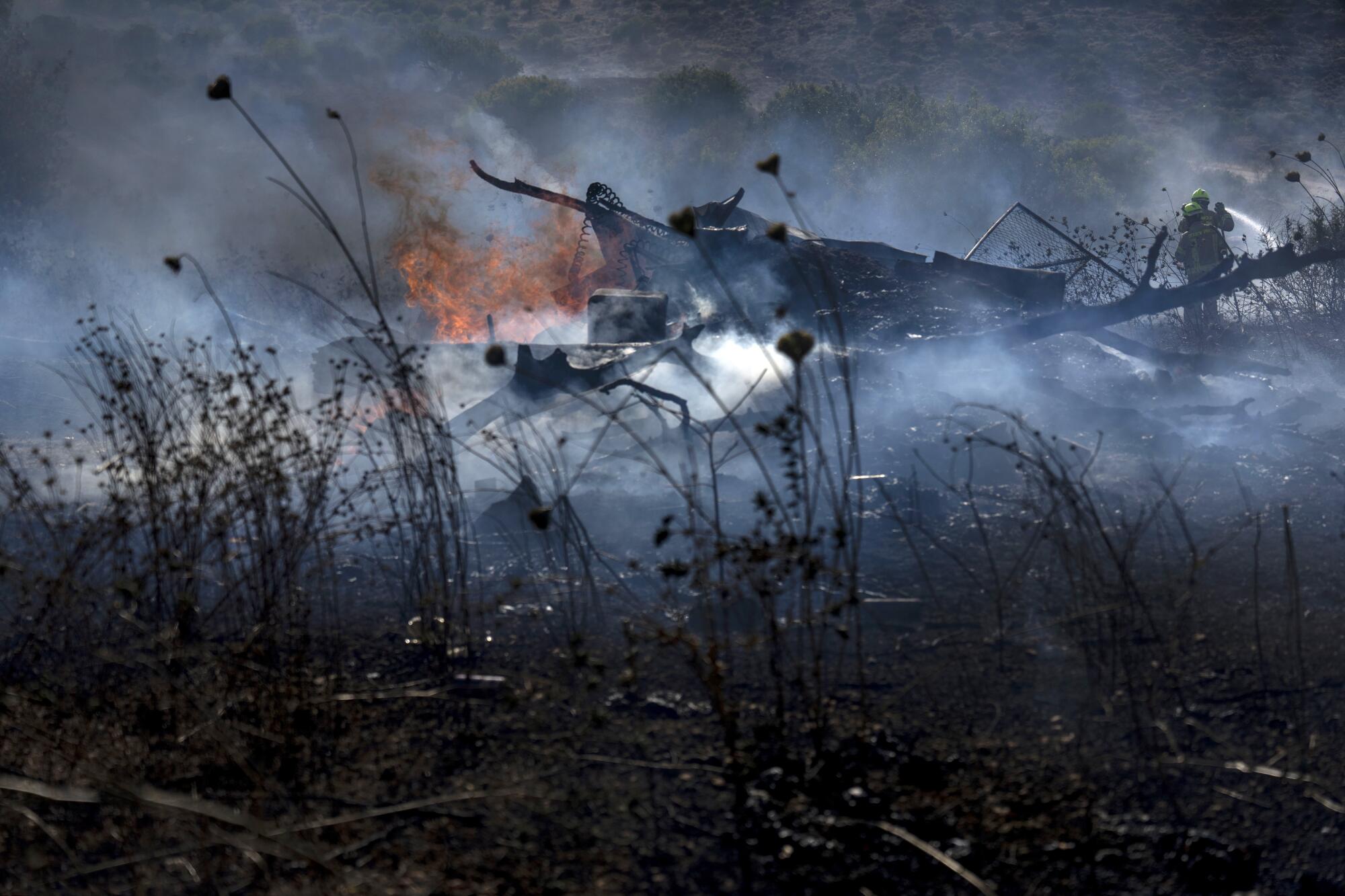
Hezbollah and Israel have faced off before, first in 1982, when Israel invaded southern Lebanon and attempted to install a friendly government — a plan that backfired so badly that many Israelis consider Lebanon their Vietnam. The ensuing 18-year occupation, with widespread allegations of torture and killings by Israel and its collaborators, spurred the ascent of Hezbollah.
The last major war between the two was in 2006, when Hezbollah abducted two Israeli soldiers and Israel retaliated by turning villages and towns to rubble.
After the war, the two sides had maintained an uneasy truce. Despite the occasional shelling or Israeli warplane overflight, families would come to the beach in Naqoura, the southernmost city on Lebanon’s coast, and swim in the shadow of a giant cutout figure depicting a slain Hezbollah commander.
In some parts of the south, you could drive so close to the border you could make out the license plate numbers on Israeli cars passing by.
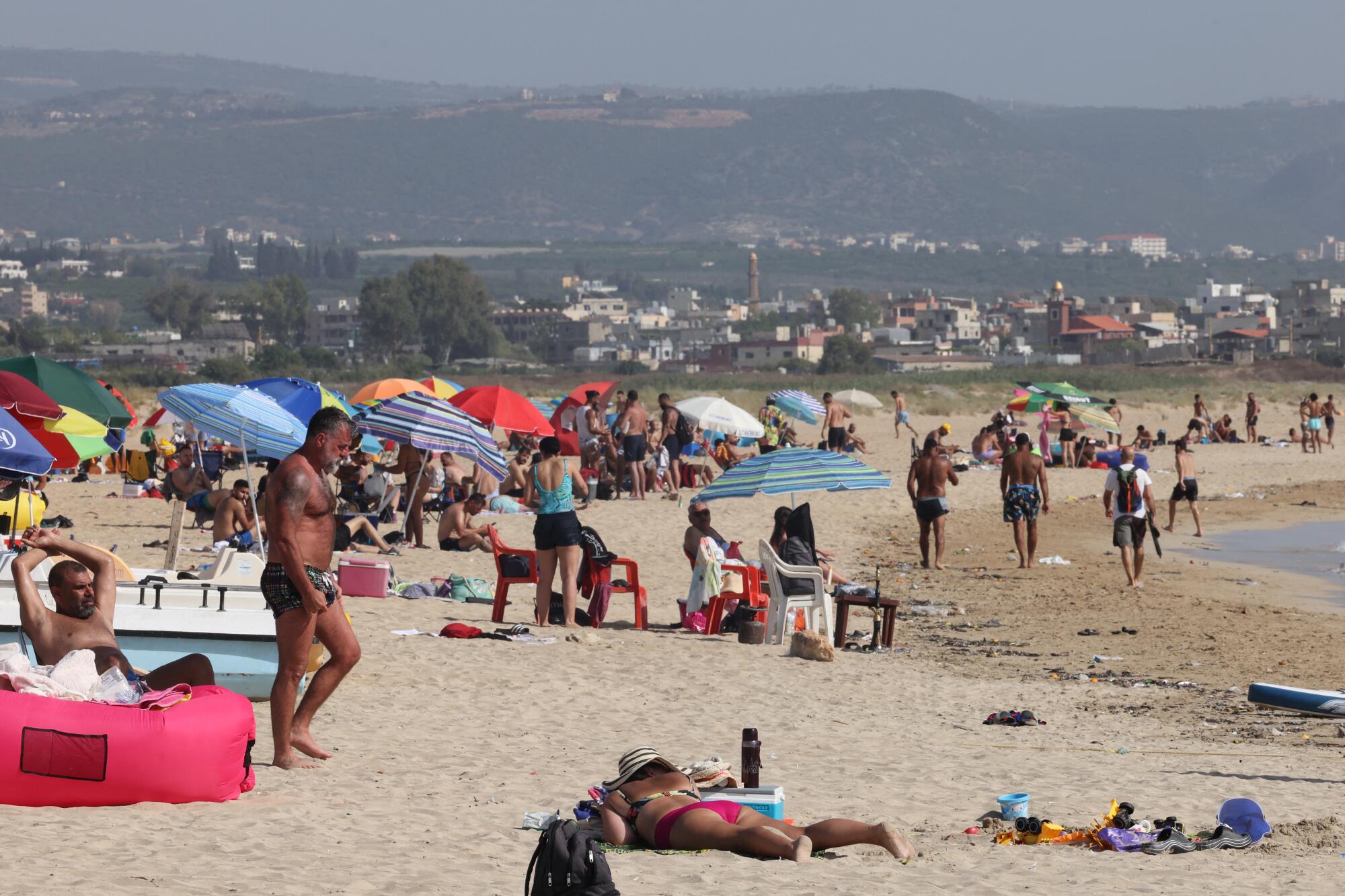
But it may be harder to recover this time. With Lebanon’s economy in free-fall since 2019, rebuilding will be more difficult. There are also fears about contamination of the soil with white phosphorus and what that could mean for farming.
Many here believe it’s part of a wider campaign aimed at creating a buffer zone with Israel.
“It’s clear in the official Israeli psyche that the security of northern Israel in their mind is premised on emptying southern Lebanon,” said Nadim Houry, the executive director of the Arab Reform Initiative think tank.
For now, firefighters are racing to limit the damage as best they can. Hardan, the civil defense chief, drove to a spot by a chicken coop, where a column of smoke had reappeared in an area where they had put out a fire. He dragged a fire hose through a soot-blanketed meadow, then sprayed water at the embers hidden under one of the trees.
“Let both sides fight as much as they want and attack military sites,” he said. “But there’s nothing here. Why hit this area with phosphorus or incendiary weapons?
“This tree, it’s like my child. Even on the other side, when I saw the forests there burning, I was sad — that’s the air we breathe.”
More to Read
Sign up for Essential California
The most important California stories and recommendations in your inbox every morning.
You may occasionally receive promotional content from the Los Angeles Times.
